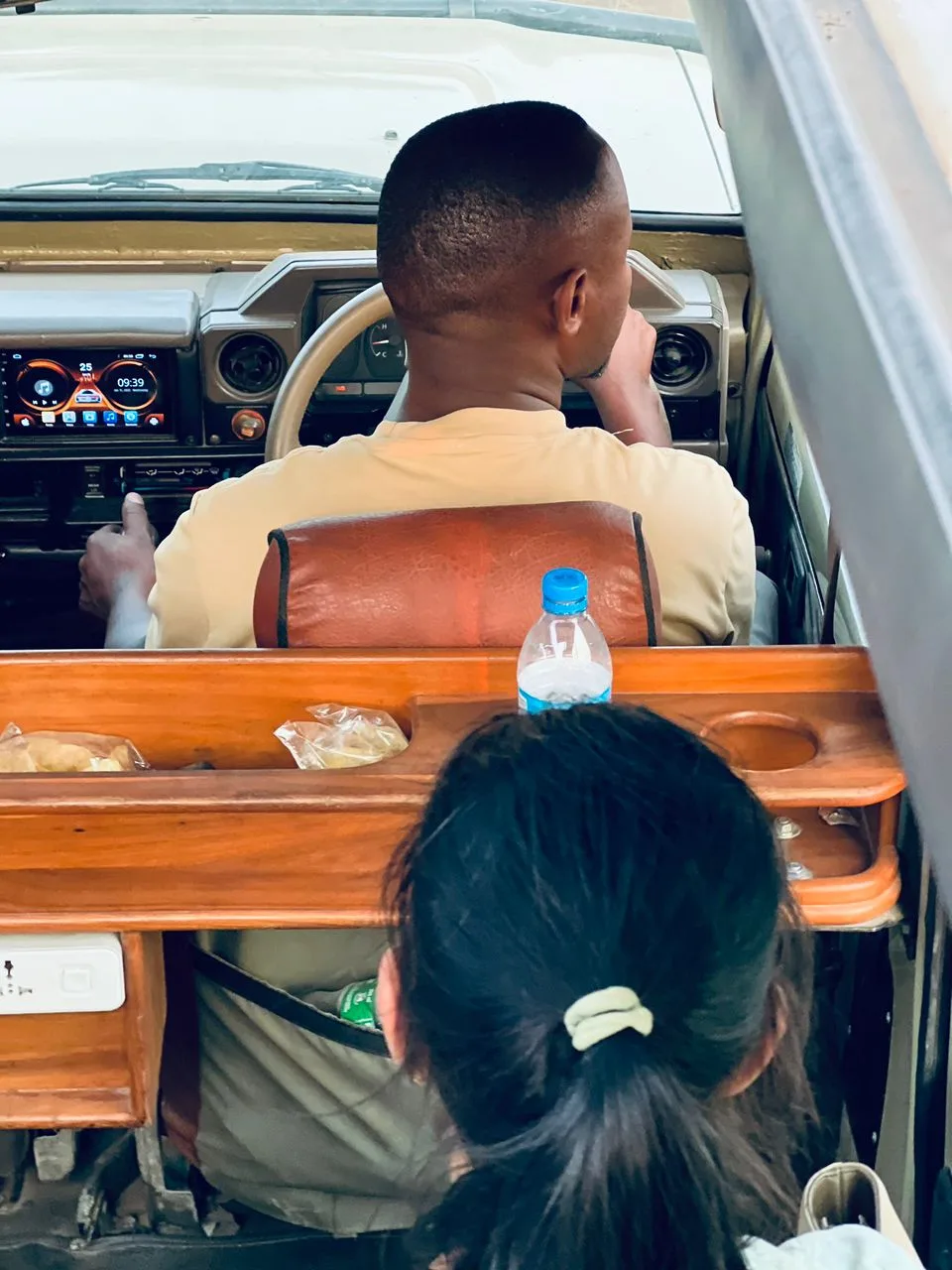Western Corridor Safari Area in Serengeti National Park — Complete Travel Guide
Western Corridor Safari Area in Serengeti National Park — Complete Guide 2025/[Next_year]
The Western Corridor Safari Area in Serengeti National Park is one of Tanzania’s most spectacular wildlife regions. Known for its lush landscapes, dramatic Grumeti River crossings, and abundant wildlife, this area is a hidden gem for safari enthusiasts. Unlike the crowded central Serengeti, the western corridor offers quieter game drives, luxurious camps, and unforgettable sightings of the Great Wildebeest Migration.
In this detailed guide, you’ll discover everything you need to know: the western corridor Serengeti map, accommodation options, best safari tours, travel tips, and expert recommendations from Tanzania Safari Experience.
✈️ Travel Tips – Getting to the Western Serengeti
What airport for Serengeti?
Fly into Kilimanjaro (JRO), then connect to Seronera Airstrip or Grumeti Airstrip.
Western Serengeti Airstrip: Ideal for direct access to camps.
Drive-in Safaris: From Arusha, it takes 6–7 hours by road.
Western Corridor Safari Photo Gallery
Below are stunning photos captured during the Serengeti Wildebeest Migration, showcasing the breathtaking moments of millions of wildebeest and zebras on their epic journey across the plains.
Expert recommendation
As a Tanzania Safari Specialist, my recommendation is to spend at least three nights in the western corridor Serengeti, ideally between May and July. This ensures you have the best chance of witnessing the migration herds gathering along the Grumeti River.
Stay in a lodge or camp that is close to the action, such as Lahia Tented Lodge Serengeti Western Corridor or Mila Tented Camp Western Serengeti. Both offer outstanding views, luxury amenities, and excellent guiding. If you’re seeking something adventurous, Grumeti Hills Camp is perfect for walking safaris.
I also recommend including a hot air balloon safari in your itinerary. Although balloon safaris are an additional cost, they are worth every penny. Floating silently above the plains at sunrise gives you a breathtaking perspective of the Serengeti, especially when migration herds stretch as far as the eye can see.

Laurent Karume
Tanzania Safari Specialist
Western Corridor Safari Highlights
- Over 1.5 million wildebeest migrate every year.
- Predator sightings
- Crocodiles & hippos
- Luxury camps
- Experience a magical hot air balloon safari at sunrise
- Quieter and less crowded than the central Serengeti
- Easy access via Grumeti & Kirawira Airstrips
At a glance
- Tanzania
- Safari
Tailormade itineraries
Every Tanzania Safari Experience adventure is customized just for you—no fixed tours or set dates. Speak with our Tanzania Safari experts to help you plan your perfect Tanzania Safari itinerary.
📍 Western Corridor Serengeti Location
The western corridor of Serengeti National Park is located in the northwest section of the park, stretching nearly 50 kilometers along the Grumeti River. It serves as a natural migration route for wildebeests and zebras on their journey from the central Serengeti to the northern plains near Kenya’s Maasai Mara. Because of this, it plays a vital role in the Serengeti Great Migration timing.
The landscape here is a mix of open plains, riverine forests, and rolling hills. This unique environment supports a rich variety of animals and bird species, making it one of the most diverse areas of the park. Travelers often ask about the western corridor Serengeti location because it feels tucked away compared to the more famous central and northern zones. Yet, this remoteness is part of its charm — fewer safari vehicles, quieter game drives, and more authentic encounters with nature.
The area is easily accessible via two small airstrips — Grumeti Airstrip and Kirawira Airstrip — which connect to major hubs like Arusha, Kilimanjaro International Airport (JRO), and Seronera Airstrip. If you’re wondering “which airport in Tanzania for Serengeti?”, most travelers fly into Kilimanjaro or Arusha before catching a domestic flight directly into the western Serengeti.
🔬 Western Serengeti Research Facility
This region is also home to wildlife research centers, focusing on crocodiles, lions, and migration patterns. These efforts help preserve the unique ecosystem of the western corridor.
Western Serengeti vs Central Serengeti
One of the most common questions travelers face is whether to visit the western Serengeti or the central Serengeti. Both regions have incredible wildlife viewing, but they offer very different experiences.
The central Serengeti, particularly the Seronera Valley, is known as the park’s main safari hub. It has excellent year-round game viewing, large predator populations, and more established lodges. However, it is also the busiest part of the park, with higher numbers of safari vehicles, especially during peak season.
The western corridor Serengeti, on the other hand, is quieter and less crowded. The highlight here is the Grumeti River crossings during the Great Migration from May to July, when herds gather in staggering numbers. Beyond migration season, the western corridor still offers excellent predator action, resident wildlife, and a more peaceful safari experience.
For first-time visitors, combining both areas often provides the best safari in Serengeti — a balance between the year-round excitement of the central Serengeti and the seasonal drama and tranquility of the west.
Travel Tips – Getting to the Western Serengeti
Getting to the western Serengeti requires a bit of planning, but the journey is part of the adventure. Most international visitors fly into Kilimanjaro International Airport (JRO) or Julius Nyerere International Airport (DAR) in Dar es Salaam. From there, you can take a domestic flight directly into the Serengeti.
For those specifically visiting the western corridor, the most convenient options are Grumeti Airstrip and Kirawira Airstrip, which are served by domestic airlines from Arusha and Kilimanjaro. These smaller planes provide a scenic and thrilling way to enter the park, flying low over the savannah and offering your first glimpses of wildlife before you’ve even landed.
If you prefer to travel overland, it is possible to drive from Arusha to the western Serengeti. The trip takes about 6–7 hours and can be combined with stops in the central Serengeti for game drives along the way. Overland travel also allows you to see more of Tanzania’s landscapes and local villages, but it can be tiring compared to flying.
When planning flights, many travelers ask: “What airport for Serengeti?” The best answer depends on where in the park you’re going. For the western corridor, Grumeti Airstrip is the most direct option, but connecting flights through Seronera Airstrip are also common.
Best Time to Visit the Western Serengeti
Timing your visit is key to enjoying the best safari experience. The western corridor Serengeti is at its peak between May and July, when the migration herds gather in the area. This is the best time to witness the world-famous river crossings at the Grumeti River.
If you travel between August and October, the migration has usually moved north, but the western corridor is still alive with wildlife. Predators stay behind to hunt, and the savannahs remain filled with elephants, giraffes, and resident species. This is a quieter time to visit with fewer safari vehicles on the roads.
From November to April, the green season arrives. This time is perfect for birdwatching as migratory bird species flock to the Serengeti. The landscapes turn lush and green after the rains, offering incredible photography opportunities. However, road access can be challenging, so always check the current weather in Serengeti Tanzania before planning your trip.
Why visit Western Serengeti, Serengeti National Park
The Great Wildebeest Migration
top rated Western Corridor Serengeti tours
Some of the top-rated tours here are centered around the dramatic Grumeti River crossings during the Great Migration (May–July). Others highlight the region’s rich wildlife, from large predator sightings to elephant herds along the riverbanks. Luxury fly-in safaris from Arusha or Zanzibar are also popular, offering quick access and more time to enjoy the park.
12 Days Tanzania Family Safaris
- Tanzania Family Safaris
Starting From
On Request
8 Days Tanzania Classic Safari Itinerary
- Tanzania Classic Safari
Starting From
On Request
8 Days Serengeti Wildebeest Migration Safari
- Serengeti Wildebeest Migration Safari
Starting From
On Request
7 Days The Great Serengeti Wildebeest Migration Safari
- Serengeti Wildebeest Migration Safari
Starting From
On Request
Looking for Western Corridor Safari for your dates ?
Receive a free Tanzania safari quote straight to your email within 6 hours! Customize your preferences, and we’ll craft a unique experience just for you. Prices vary based on group size and accommodation choice.
We've got you covered
Our tours are top-notch but give you great value. The price we tell you upfront covers most of the costs for one person, like flights and all transfers.
- Park fees
- All activities (unless labeled as optional)
- All accommodation as stated in the itinerary
- A professional driver/guide
- All transportation (unless labeled as optional)
- All Taxes/VAT
- Roundtrip airport transfer
- All Meals (as specified in the day-by-day section)
- Air Ambulance Service by AMREF Flying Doctors;
- At Least 1 Pair Of Binoculars;
- International flights (from/to home)
- Additional accommodation before and at the end of the tour
- Tips to your safari guide ($30-50 per day per car).
- Personal items (souvenirs, travel insurance, visa fees, etc.)
- Government imposed increase of taxes and/or park fees
- Alcohol drinks
- Visas and visa fees where relevant
- Additional activities not offered as scheduled by the accommodation
- Lunch and dinner in hotel (only before and after safari);

Connect with our local experts for personalized travel planning
Plan your Western Corridor Safari today
Everything You Need to Know About Your Safari
Every safari adventure begins with a question. Whether it’s your first or second time, it’s natural to wonder about the best time to visit, what to pack, or how the journey works. Here, we’ve answered the most common questions travelers ask before booking their Tanzania safari, so you can plan with confidence and look forward to unforgettable memories.
The Western Corridor Serengeti is a stretch of land along the Grumeti River in the northwest of Serengeti National Park. It is famous for the Great Migration river crossings, large predator populations, and luxury safari camps.
The best time is May to July, when the wildebeest herds gather to cross the Grumeti River. This is the most dramatic wildlife spectacle of the year. Outside of migration season, the western corridor still offers excellent game viewing, with lions, elephants, giraffes, and hippos seen year-round.
You can see lions, leopards, elephants, giraffes, buffalo, crocodiles, and hippos. During migration season, you’ll also see huge herds of wildebeests and zebras. For bird lovers, the area is home to fish eagles, storks, and many other species.
The easiest way is to take a flight from Arusha or Kilimanjaro to Grumeti or Kirawira Airstrip. You can also drive from Arusha, but the journey takes 6–7 hours. Many travelers prefer luxury fly-in safaris from Arusha or Zanzibar to save time.
For non-residents, the Serengeti National Park Tanzania entrance fee is $83 per adult per day and $23 for children (ages 5–15). East African residents pay reduced rates. Fees are set by TANAPA and may change yearly.
There are several top-rated western corridor Serengeti camps and lodges, including Lahia Tented Lodge, Mila Tented Camp, and Grumeti Hills Camp. These range from mid-range safari tents to luxury 5-star lodges with stunning views of the plains.
The central Serengeti is busy and offers year-round wildlife, while the western corridor is quieter and best known for the Grumeti River crossings between May and July. Many travelers combine both areas for a complete Serengeti safari.
Yes, hot air balloon safaris are available in the western corridor. They usually take place at sunrise and give you breathtaking aerial views of the plains, wildlife, and, during the season, the migration herds.
Most travelers fly into Kilimanjaro International Airport (JRO), then take a domestic flight to the Serengeti. For the western corridor, the closest airstrips are Grumeti and Kirawira, both of which are served by scheduled safari flights.

